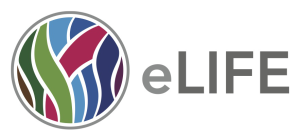By Lilian Nassi-Calò
The Howard Hughes Medical Institute, the Max Plank Society and the Wellcome Trust launched in 2012 the online, open access, peer reviewed journal eLife, which publishes articles in biomedicine and life sciences. The nonprofit publication has as Editor-in-Chief Randy Schekman, of the University of California at Berkeley. Schekman was awarded the Nobel Prize in Physiology or Medicine in 2013 along with two other researchers for their work on the regulation of vesicle transport through the cell membrane.
The initiative began in a workshop organized in 2010 by the Howard Hughes Medical Institute. Participants concluded that there was a need to create a publication model that met the needs of the academic community regarding the editorial policy. The journal relies on a staff of Senior Editors made of renowned, experienced researchers, active in their fields, which operate independently from the founding institutions of the journal.
eLife is not just another open access platform journal type that continuously publishes articles as they are accepted; its editorial policy is geared to the fast and efficient publication of sound scientific research results that contribute to the development of knowledge in the covered areas. However, its innovative approach on manuscripts assessment process stands out. The authors receive an initial response a few days after submission. Most of the articles go through only one round of review, and recommendations are consolidated, gathering comments from reviewers. Editorial decisions are taken exclusively by researchers. The journal does not promote the Impact Factor, but provides qualitative and quantitative indicators on the scope of the articles. Moreover, articles are published together with a simplified language summary in (eLife Digests) to make them accessible to a wider audience as students, researchers from other areas and the public in general, which also attracts scientific dissemination vehicles and major newspapers. The journal is fully open access under the CC-BY attribution and does not charge publication fees.
eLife Peer review
eLife adopts an innovative peer review process, which aims to ensure clear direction of the manuscript evaluation and constructive comments. The decisions are quick, efficient and consist of clear and feasible recommendations made by the referees, preferably conducted in a single review round.
One of the Senior Editors of the journal responds to authors within three days on average informing whether their work will undergo peer review. He himself reviews the article, also inviting one or two reviewers to consult. The reviewers meet to discuss their opinions and send a single consolidated set of recommendations on the revisions to be made in order to publish the article. This feedback takes on average after 30 days after submission. Generally new rounds of review are not necessary, as the Senior Editor is prepared to evaluate new submissions without having to resort to the reviewers.
For transparency and openness sake, eLife publishes the most relevant parts of the peer review process and decisions, as well as responses from the authors, upon their authorization. The whole process, from online submission to acceptance takes on average 90 days, a much shorter period the most renowned journals, which can take up to a year or more.
In January 2015, eLife published an editorial entitled “The pleasure of publishing”, authored by Senior Editor Vivek Malhorta and Senior Editor, neuroscientist Eve Marder1. The text highlights the unique characteristics of the peer review process of the journal, which combines rigor and insight, along with results and ideas that will make other researchers think differently about their study field. Eve Marder, Professor at the Department of Biology of the Brandeis University, Waltham, MA, USA, has been named new eLife Deputy Editor as it has published its 1,000th research article, on May 1st. According to Editor-in-Chief Randy Schekman, “Eve Marder is one of our most committed champions, she speaks eloquently to the need for reform in peer review and to abandon the constraints imposed on us by a print-focused communication model”.
By taking the evaluation system eLife manuscripts as an innovative example, the SciELO in Perspective blog will present a free translation of this editorial in a separate post.
Note
1 MALHORTA, V; and MARDER, E. The pleasure of publishing. eLife. 2015, vol. 4:e05770. DOI: http://dx.doi.org/10.7554/elife.05770.
References
About. eLife Science. Available from: http://elifesciences.org/about.
eLife. Welcome Trust. Available from: http://www.wellcome.ac.uk/About-us/Policy/Spotlight-issues/Open-access/Journal/index.htm.
MALHORTA, V; and MARDER, E. The pleasure of publishing. eLife. 2015, vol. 4:e05770. DOI: http://dx.doi.org/10.7554/elife.05770.
 About Lilian Nassi-Calò
About Lilian Nassi-Calò
Lilian Nassi-Calò studied chemistry at Instituto de Química – USP, holds a doctorate in Biochemistry by the same institution and a post-doctorate as an Alexander von Humboldt fellow in Wuerzburg, Germany. After her studies, she was a professor and researcher at IQ-USP. She also worked as an industrial chemist and presently she is Coordinator of Scientific Communication at BIREME/PAHO/WHO and a collaborator of SciELO.
Translated from the original in portuguese by Lilian Nassi-Calò.
[Reviewed – 13 May 2015]
Como citar este post [ISO 690/2010]:





![eLife ends accept/reject decisions following peer review [Originally published by eLife in October/2022] eLife logo](https://blog.scielo.org/en/wp-content/uploads/sites/2/2022/11/eLife-logo_thumb.jpg)












Recent Comments